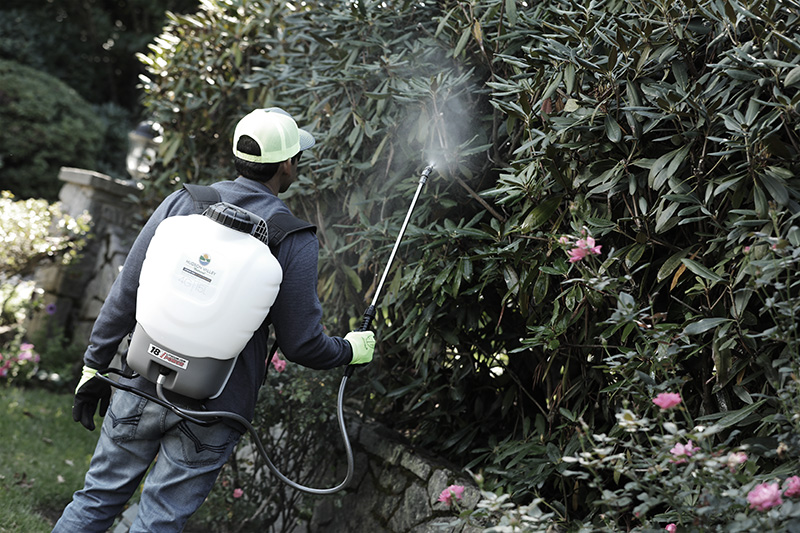As we head into the summer months, people in most areas of the country are already battling the return of mosquitoes and ticks in their outdoor spaces. With over 200 different types of mosquitos in the continental U.S. it can be very hard to know which ones are just a nuisance, and which ones could cause you or your pets severe illness.
With the summer of 2024 ahead of us, the warmer weather can lead to a higher occurrence of mosquito and tick activity. On top of that, in many regions, due to the mild winter this year, tick populations are already showing up in greater numbers than earlier in the season.
Learn more below from Central’s Chemicals Category Director, Austin Marsteller, about these pests, and some solutions on what to do to help your customers solve these problems.
Mosquitos
Mosquito season can start as early as February or March in some parts of the country. When temperatures reach a consistent 50 degrees, mosquito eggs begin to hatch and the mosquito season begins. Additionally, mosquito season is extending, since many areas of the country are staying warm late into the fall and early winter.
With the increased frequency of larger storms and flooding within areas of the country that haven’t previously experienced this increase in water, many people are seeing an increase in pests as well. Increased flooding results in increased hatching of eggs. It takes less than a week for mosquitos to go from egg to adulthood and each female mosquito can lay up to 3,000 eggs in her lifetime. It’s no wonder that an infestation can happen so quickly.
More and more, homeowners are calling in professionals to make sure that their families are protected. They want regular and ongoing control so that they can enjoy their outdoor spaces without worry. When offering services to your customers, it’s important to have the right solution to meet their needs. Some customers may request an all-organic kid and pet safe option, some may want the strongest formula available, and another customer may want something in between.
Ticks
Ticks become prevalent when the temperature is consistently about 45 degrees. Much like mosquito season, tick season is lasting longer each year with many of the areas of the country getting warmer earlier in the year and staying warm late into fall and early winter. Tick populations can be found throughout the country but the Northeast, Mid-Atlantic, and upper Midwest are seeing the largest impact. Over the last five to ten years, there has been an explosion of tick-borne illnesses such as Lyme disease.
Unlike mosquito season, tick season can be further split up into three parts based on their 2-year life cycle. In the early spring, from late February to late April, adult ticks are the most prevalent and active. Adult female ticks lay their eggs around the end of spring before dying.
During the summer, especially around June and July, is primarily when tick nymphs are most active (immature ticks that have not yet developed into adults). These nymphs develop after being within the larval stage that was hatched from an egg in the previous year (not newly-laid eggs). This is when you should be on the highest alert, since most humans infected by Lyme disease contract it after being bitten by nymphal ticks according to the CDC.
Tick activity is also directly correlated with the population trends of their potential hosts, especially rats and field mice. Ticks are most likely to live in tall grass, wooded areas, landscape plantings, and other shady areas. They tend to be most abundant in very small patches of wooded areas (less than an acre). This is because these small patches usually have higher concentrations of disease carrying rodents, such as mice, that ticks are able to attach themselves to. Additionally, these areas often lack natural predators, such as foxes or owls, because of the small space. This allows the rodents, and ultimately, ticks to multiply easily. These ticks then attach themselves to larger hosts such as deer, dogs, and even humans—spreading disease and illness.
With this influx of ticks, we again, see consumers looking for professionals to treat their properties in order to control ticks. They are looking to keep their families and pets safe by aiming to stave off Lyme disease and other illnesses, so they can enjoy their outdoor spaces without worry.
Effective Solutions for Ticks & Mosquitoes
Insect control offers a great opportunity to expand and diversify your business services. The number of contractors offering outdoor insect control applications has accelerated rapidly within the last couple of years because of the increase in demand from customers and the relatively low-cost to enter.
Tick and Mosquito season has already started, so it is time to start applying control products now, before ticks and mosquitoes start to multiply. When offering repellent services, make sure to offer a multi-visit package to keep your customer’s property insect free all season long.
We’ve compiled a list of effective control products for tick and mosquito including traditional chemistries and even a 100% organic option.
Traditional
ProFlex
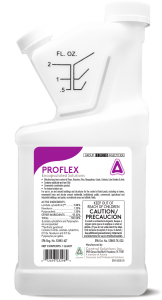
Fast-acting and long-lasting solution for several hard to control pests including mosquitoes, cockroaches, fleas and ticks. Three active ingredients provide three modes of action control insects. This product offers a 90-day guarantee. Combination Chemistry® contains adulticide and two insect growth regulators (IGRs)
- Breaks the life cycle of insect reproduction to control fleas, stored product pests, cockroaches, mosquitoes, Lone Star ticks, and other listed insect pests
- Quick- acting & long lasting
- Low-odor, for indoor/outdoor use
Talstar Pro (Bifenthrin)
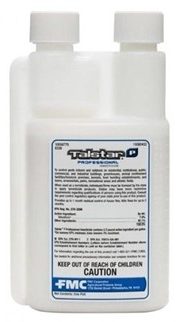
There’s a reason Talstar® Professional has become an industry standard over the last 25 years – it has stood the test of time with a broad label and dependable efficacy. Can be used on lawns, ornamentals, parks, recreational areas and athletic fields to control chinch bugs, crickets, fire ants, scorpions, aphids and other listed insects
- Long-lasting control of over 75 pests, including ants, termites, cockroaches, spiders, bed bugs, fleas, ticks and especially, mosquitoes
- Non-irritating and contains no odorous or plant-damaging solvents
- Leaves no unsightly residues and causes no phytotoxicity
- Broad label and dependable efficacy
- Low-odor, for indoor/outdoor use
FMC guarantees 45 days of no callbacks after Talstar® Professional Insecticide mosquito treatment within the program period. If any callbacks occur, FMC will provide the amount of Talstar® Professional Insecticide needed to make a reapplication to the treated area free of charge, as outlined in FMC’s Mosquito Promise™ Program.
Scion
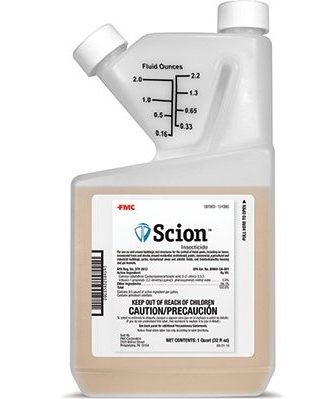
Scion insecticide with UVX technology is the next generation of insecticides. Extremely versatile Scion is powered by gamma-cyhalothrin, a highly efficient pyrethroid active ingredient. The formulation is enhanced by FMC’s innovative and proprietary UVX Technology to deliver prompt control. UVX is a multi-component formulation engineered to provide at least 90 days of true performance – even in conditions that degrade other products.
- Take on Ticks in All Conditions. FMC Guarantees 75 days of no retreatments* after a Scion® insecticide with UVX™ technology exterior perimeter barrier application made within the program period.
- Effective Mosquito Control with Exceptional Durability. FMC Guarantees 75 days of no retreatments* after a Scion insecticide with UVX™ technology mosquito service done within the program period.
- * Assurance Program Link for FMC- https://www.fmctruechampions.com/category/pest/solution-assurances-pest/
100% Organic
Central Organic Insect Control
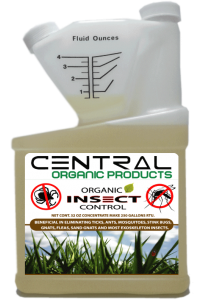
Central Organic offers 100% organic control for a wide spectrum of insects, including ticks and mosquitoes. It is an all-organic formula which will not harm beneficial insects like bees, butterflies, and earthworms, but will eliminate ticks, mosquitoes and other insects, and is EPA-exempt.
- Central Organic Total Insect Control can be applied with a traditional sprayer or can be used with a fogger device
- The product has residual effect for 4-6 weeks, so plan to apply monthly
About Austin Marsteller
Austin has a decade of experience in the Green Industry, a degree in Turfgrass Science from Penn State University and an MBA from Louisiana State University-Shreveport. His career has been heavily focused in turf and ornamental on the manufacturer side, and most recently in agriculture, specifically in bio stimulants, adjuvants and specialty fertilizers. Austin works closely with all the employees and partners of Central to provide superior service and solutions to our turf and ornamental customers.

